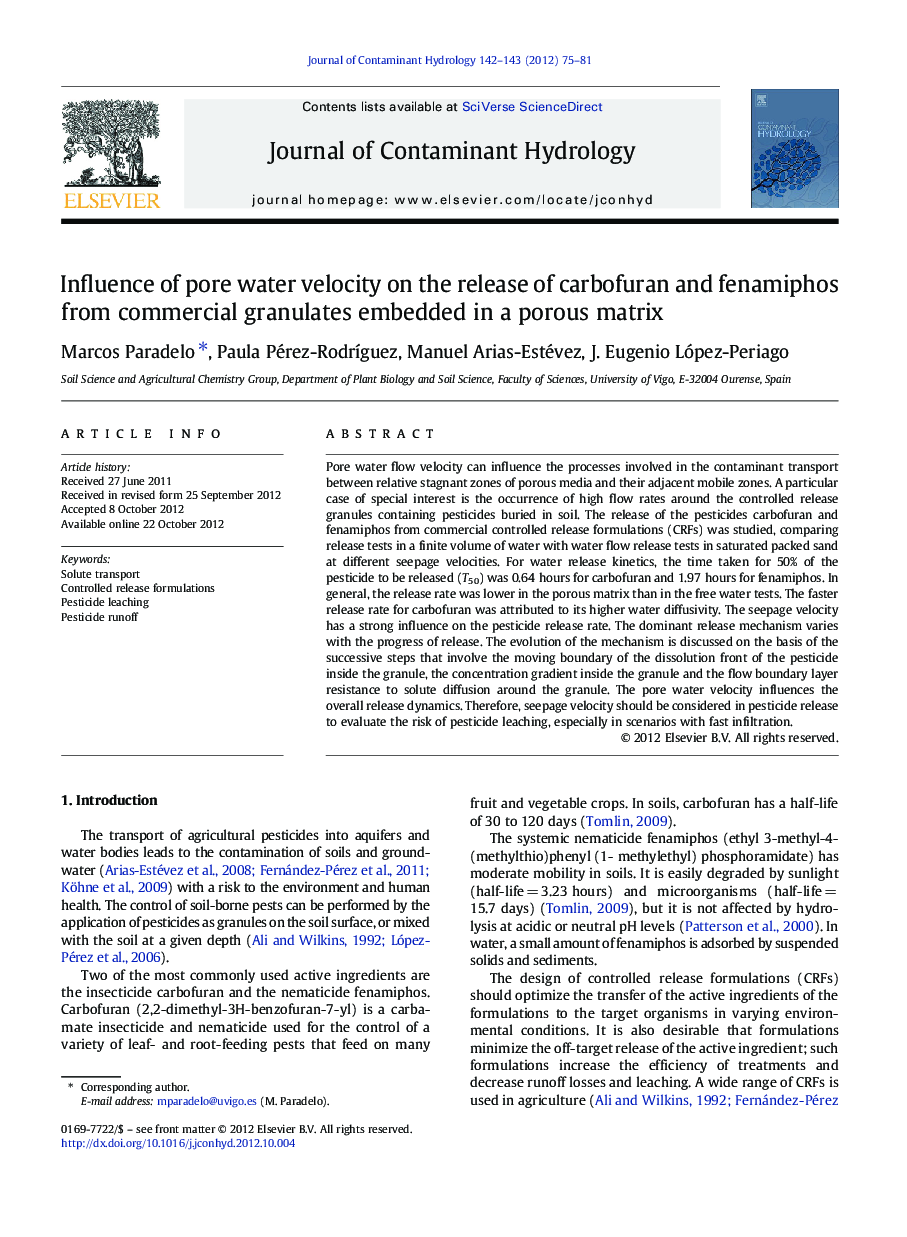| کد مقاله | کد نشریه | سال انتشار | مقاله انگلیسی | نسخه تمام متن |
|---|---|---|---|---|
| 4546781 | 1627063 | 2012 | 7 صفحه PDF | دانلود رایگان |

Pore water flow velocity can influence the processes involved in the contaminant transport between relative stagnant zones of porous media and their adjacent mobile zones. A particular case of special interest is the occurrence of high flow rates around the controlled release granules containing pesticides buried in soil. The release of the pesticides carbofuran and fenamiphos from commercial controlled release formulations (CRFs) was studied, comparing release tests in a finite volume of water with water flow release tests in saturated packed sand at different seepage velocities. For water release kinetics, the time taken for 50% of the pesticide to be released (T50) was 0.64 hours for carbofuran and 1.97 hours for fenamiphos. In general, the release rate was lower in the porous matrix than in the free water tests. The faster release rate for carbofuran was attributed to its higher water diffusivity. The seepage velocity has a strong influence on the pesticide release rate. The dominant release mechanism varies with the progress of release. The evolution of the mechanism is discussed on the basis of the successive steps that involve the moving boundary of the dissolution front of the pesticide inside the granule, the concentration gradient inside the granule and the flow boundary layer resistance to solute diffusion around the granule. The pore water velocity influences the overall release dynamics. Therefore, seepage velocity should be considered in pesticide release to evaluate the risk of pesticide leaching, especially in scenarios with fast infiltration.
► Commercial formulations influence the release of pesticides in porous media.
► Specific release mechanisms occur depending on CRF properties.
► Seepage velocity critically determines the release rate of pesticides from CRFs.
► Boundary layer resistance is a candidate factor controlling release from CRFs.
Journal: Journal of Contaminant Hydrology - Volumes 142–143, November 2012, Pages 75–81